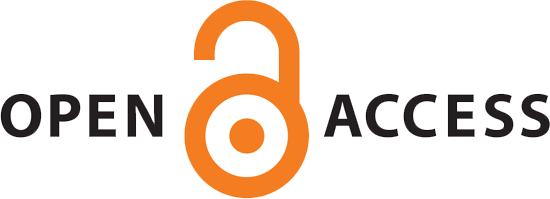Fibroblast Modulation of Invasion and Chemoresistance in Triple-Negative Breast Cancer: Insights from a Two-Cell Organoid Model
Abstract
Objectives: Triple-negative breast cancer (TNBC) is a hyperaggressive kind of breast cancer, due to its lack of therapeutic options, as it lacks hormonal receptors. Today, the only potential drug in the treatment of this subtype is chemotherapy, however drug resistance occurs after a while. In this study, we aimed to develop a co-culture organoid model to analyze the contribution of ''fibroblast'' on TNBC cell invasion and chemoresistance.
Methods: A two-cell organoid model using the MDA-MB-231 cell line, a model cell for TNBC, and primary human foreskin fibroblasts (HDFs), was established. Their invasion and chemotherapy response were evaluated.
Results: Our data shows that the fibroblasts made the invasion and chemoresistance easier. Hence, the important role of fibroblasts in modulating TNBC cell behavior was substantiated because the contribution of fibroblasts in TME was shown to promote invasion phenotype enhancement and decrease sensitivity to chemotherapy drugs.
Conclusion: This study points out the significance of an organoid model in reproducing the tumor environment (TME), hence, it brings evidence for the involvement of fibroblasts in the formation of TNBC. Thereby, the increased drug resistance and invasion observed in organoids with fibroblasts further advocate the relevance of targeting the TME components when conceiving future therapeutic strategies for TNBC.
2. Ali Karami R, Zahra S, Mohammad Amin V, Banafsheh S, Farzad Izak S, Masoumeh T-Y. Caffeic acid stimulates breast cancer death through Reactive oxygen species (ROS) formation, Caspase activation and mitochondrial membrane potential depletion. Acta Biochimica Iranica. 2023;1(4). https://doi.org/10.18502/abi.v1i4.14719
3. Obidiro O, Battogtokh G, Akala EO. Triple negative breast cancer treatment options and limitations: future outlook. Pharm. 2023;15(7):1796. https://doi.org/10.3390/pharmaceutics15071796
4. Ehsan N, Zohreh A, Banafsheh S, Hannaneh Z, Yousef M, Marzieh S, et al. The expression of sirtuins in breast cancer and their prognostic and clinicopathological significance: a systematic review. Acta Biochim Iran. 2024;2(2). https://doi.org/10.18502/abi.v2i2.17932
5. Brogna MR, Varone V, DelSesto M, Ferrara G. The role of CAFs in therapeutic resistance in triple negative breast cancer: an emerging challenge. Front Mol Biosci. 2025;12:1568865. https://doi.org/10.3389/fmolb.2025.1568865
6. Mollah F, Varamini P. Overcoming therapy resistance and relapse in TNBC: Emerging technologies to target breast cancer-associated fibroblasts. Biomedicines. 2021;9(12):1921. https://doi.org/10.3390/biomedicines9121921
7. Erdogan B, Webb DJ. Cancer-associated fibroblasts modulate growth factor signaling and extracellular matrix remodeling to regulate tumor metastasis. Biochem Soc Trans. 2017;45(1):229-36. https://doi.org/10.1042/bst20160387
8. Knipper K, Lyu SI, Quaas A, Bruns CJ, Schmidt T. Cancer-associated fibroblast heterogeneity and its influence on the extracellular matrix and the tumor microenvironment. Int J Mol Sci. 2023;24(17):13482. https://doi.org/10.3390/ijms241713482
9. Belhabib I, Zaghdoudi S, Lac C, Bousquet C, Jean C. Extracellular matrices and cancer-associated fibroblasts: targets for cancer diagnosis and therapy? Cancers. 2021;13(14):3466. https://doi.org/10.3390/cancers13143466
10. Zheng J, Hao H. The importance of cancer-associated fibroblasts in targeted therapies and drug resistance in breast cancer. Front Oncol. 2024;13:1333839. https://doi.org/10.3389/fonc.2023.1333839
11. Tao L, Huang G, Song H, Chen Y, Chen L. Cancer associated fibroblasts: An essential role in the tumor microenvironment. Oncol Lett. 2017;14(3):2611-20. https://doi.org/10.3892/ol.2017.6497
12. Heo JH, Kang D, Seo SJ, Jin Y. Engineering the extracellular matrix for organoid culture. Int J Stem Cells. 2022;15(1):60-9. https://doi.org/10.15283/ijsc21190
13. Link R, Weißenbruch K, Tanaka M, Bastmeyer M, Schwarz US. Cell shape and forces in elastic and structured environments: from single cells to organoids. Adv Funct Mater. 2024;34(20):2302145. https://doi.org/10.1002/adfm.202302145
14. Feng Q-S, Shan X-F, Yau V, Cai Z-G, Xie S. Facilitation of Tumor Stroma-Targeted Therapy: Model Difficulty and Co-Culture Organoid Method. Pharm. 2025;18(1):62. https://doi.org/10.3390/ph18010062
15. Januškevičienė I, Petrikaitė V. Interaction of phenotypic sublines isolated from triple-negative breast cancer cell line MDA-MB-231 modulates their sensitivity to paclitaxel and doxorubicin in 2D and 3D assays. American Journal of Cancer Research. 2023;13(8):3368.
16. Lugo-Cintrón KM, Gong MM, Ayuso JM, Tomko LA, Beebe DJ, Virumbrales-Munoz M, et al. Breast fibroblasts and ECM components modulate breast cancer cell migration through the secretion of MMPs in a 3D microfluidic co-culture model. Cancers. 2020;12(5):1173. https://doi.org/10.3390/cancers12051173
17. Takai K, Le A, Weaver VM, Werb Z. Targeting the cancer-associated fibroblasts as a treatment in triple-negative breast cancer. Oncotarget. 2016;7(50):82889. https://doi.org/10.18632/oncotarget.12658
18. de Paula B, Kieran R, Koh SSY, Crocamo S, Abdelhay E, Muñoz-Espín D. Targeting senescence as a therapeutic opportunity for triple-negative breast cancer. Mol Cancer Ther. 2023;22(5):583-98. https://doi.org/10.1158/1535-7163.mct-22-0643
19. Spagnol G, Sensi F, De Tommasi O, Marchetti M, Bonaldo G, Xhindoli L, et al. Patient derived organoids (PDOs), extracellular matrix (ECM), tumor microenvironment (TME) and drug screening: state of the art and clinical implications of ovarian cancer organoids in the era of precision medicine. Cancers. 2023;15(7):2059. https://doi.org/10.3390/cancers15072059
20. Falahi F, Akbari-Birgani S, Mortazavi Y, Johari B. Caspase-9 suppresses metastatic behavior of MDA-MB-231 cells in an adaptive organoid model. Sci Rep. 2024;14(1):15116. https://doi.org/10.1038/s41598-024-65711-z
21. Beslmüller K, de Mercado RR, Koenderink GH, Danen EH, Schmidt T. Matrix Stiffness Affects Spheroid Invasion, Collagen Remodeling, and Effective Reach of Stress into ECM. Organoids. 2025;4(2):11. https://doi.org/10.3390/organoids4020011
22. Czekay R-P, Cheon D-J, Samarakoon R, Kutz SM, Higgins PJ. Cancer-associated fibroblasts: mechanisms of tumor progression and novel therapeutic targets. Cancers. 2022;14(5):1231. https://doi.org/10.3390/cancers14051231
23. Peng L. Investigating the Effect of Chemotherapy on Fibroblast Activation in Triple Negative Breast Cancer Tissue: Tufts University; 2025.
24. Miroshnychenko D, Miti T, Kumar P, Miller A, Laurie M, Giraldo N, et al. Stroma-mediated breast cancer cell proliferation indirectly drives chemoresistance by accelerating tumor recovery between chemotherapy cycles. Cancer Res. 2023;83(22):3681-92. https://doi.org/10.1158/0008-5472.can-23-0398
| Files | ||
| Issue | Vol 3 No 2 (2025) | |
| Section | Original Articles | |
| DOI | https://doi.org/10.18502/abi.v3i2.19486 | |
| Keywords | ||
| Triple-negative breast cancer Co-culture Fibroblasts Invasion Drug resistance Organoids | ||
| Rights and permissions | |

|
This work is licensed under a Creative Commons Attribution-NonCommercial 4.0 International License. |



